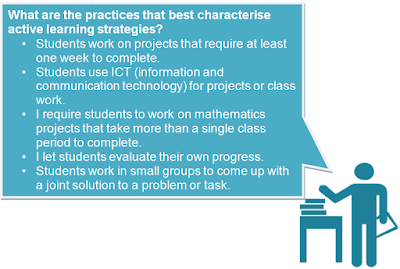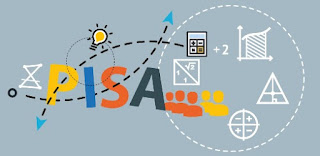Head of the Innovation and Measuring Progress Division, Directorate for Education and Skills
Traditional economics measure the benefits of education and skills in its economic gains in employment or earnings. These measures include for example the ‘rate of return’ of an individual’s investment in educational attainment or skills acquisition as the annualised average financial benefit, in much the same way as interests rates on capital investment are calculated. This is more or less equivalent to measuring, at an aggregate level of a country or region, the growth rate in the ‘gross domestic product’ (GDP) or total economic output to indicate economic growth.
Whilst such economic measures remain important and influential, they have been increasingly criticised for being one-dimensional and reductionist. They poorly reflect the diversified and holistic nature of human and social progress, well-being or happiness. The publication of the so-called Stiglitz-Sen-Fitoussi report, named after the three chairs of the Commission established by ex-French President Sarkozy to develop new measures of economic performance and social progress, was a pivotal moment for the international community that GDP did not tell the whole story of human development. International organisations – and together with the World Bank and others the OECD has taken a leadership role in this – have started to develop the measurement tools and methodologies for a multidimensional approach to well-being and social progress.
Similarly, work has been undertaken in recent years to develop a more holistic and multidimensional set of measures for estimating the various benefits of investment in education and skills, moving into fields such as health, interpersonal trust, life satisfaction, political engagement, citizenship or volunteering. For a number of years Education at a Glance has included an indicator on these so-called ‘social outcomes of education’, based on the analysis of various data collections. This issue of Education Indicators in Focus brief discusses the most recent findings of this work.
The chart above, focusing on self-reported health, is a good illustration; its pattern is not very different from the ones found for other social outcomes. Both educational attainment (horizontal dimension) and skills, measured by literacy skills, (vertical dimension) are associated with better self-reported health. The chart also shows that although there are strong interactions between education and skills, each has an impact of its own. Within each attainment level the literacy skills level of individuals is also positively associated with the health outcome, and vice versa.
Correlation does not however imply causation. Obviously there are selection effects and factors that mediate the relationship such as employment, work environments, living standards or income. But research that controls for such factors has found that there also is an independent education effect on health outcomes through the acquisition of skills that drive pro-health behaviours. Analysis of longitudinal datasets by the OECD Centre for Educational Research and Innovation’s Education and Social Progress project has shown that cognitive and non-cognitive skills acquired informal education and through informal learning change the health behaviour of individuals and improve general self-perceived health. Moreover, the non-cognitive social and emotional skills, such as self-control, perseverance and conscientiousness, seem to exert a bigger impact on health outcomes than cognitive ones.
Research on the economic benefits of education and skills has focused on the returns for individuals. Work on the social outcomes of education has also emphasised the benefits for individuals’ success in life. But what about the effects on communities and societies? Can we actually assume that the positive outcomes of education and skills at the individual level add up to better living conditions and well-being for everyone? In the case of economic returns this is far from evident. The data from Education at Glance shows us that economic returns depend on the wage differentials with less educated individuals. High rates of return mirror high levels of income inequality. Countries with less unequal income distributions show lower economic returns. Raising the share of tertiary-educated individuals in a country, leading to higher returns for those individuals, might increase social inequality if the lower attainment levels are left unchanged and the higher attainment levels concentrate on a larger share of the social product.
In the case of social outcomes this is much less the case. Individuals with higher social returns on education do not concentrate the social surplus, but there are important spill-over effects to other individuals. An individual with better health behaviour will have a positive impact on his or her social environment. Likewise, a person with higher interpersonal trust will positively influence his or her community. Better health outcomes of education thus add up to societies with higher longevity, and higher levels of individual interpersonal trust aggregate to more cohesive societies.
However, we should not be too positive about the impressively high education and skills gradient in various social outcomes. The positive impact of education and skills on health is only evident because low-educated individuals show poorer levels of self-reported health. The education and skills gradient also shows that people who have missed the opportunities for quality education and who lack the skills pay a high price in their own health. As much as we praise the good health of high-educated individuals, this remains a social problem and an educational challenge.
Links:
Education Indicators in Focus No. 47: How are health and life satisfaction related to education? by Simon Normandeau and Gara Rojas Gonzalez.
Education at a Glance 2016: OECD Indicators
Follow the conversation on twitter: #OECDEAG
Chart source: OECD Survey of Adult Skills (PIAAC) (2012, 2015). See Education at a Glance 2014 for more information, www.oecd.org/education/education-at-a-glance-19991487.htm.











